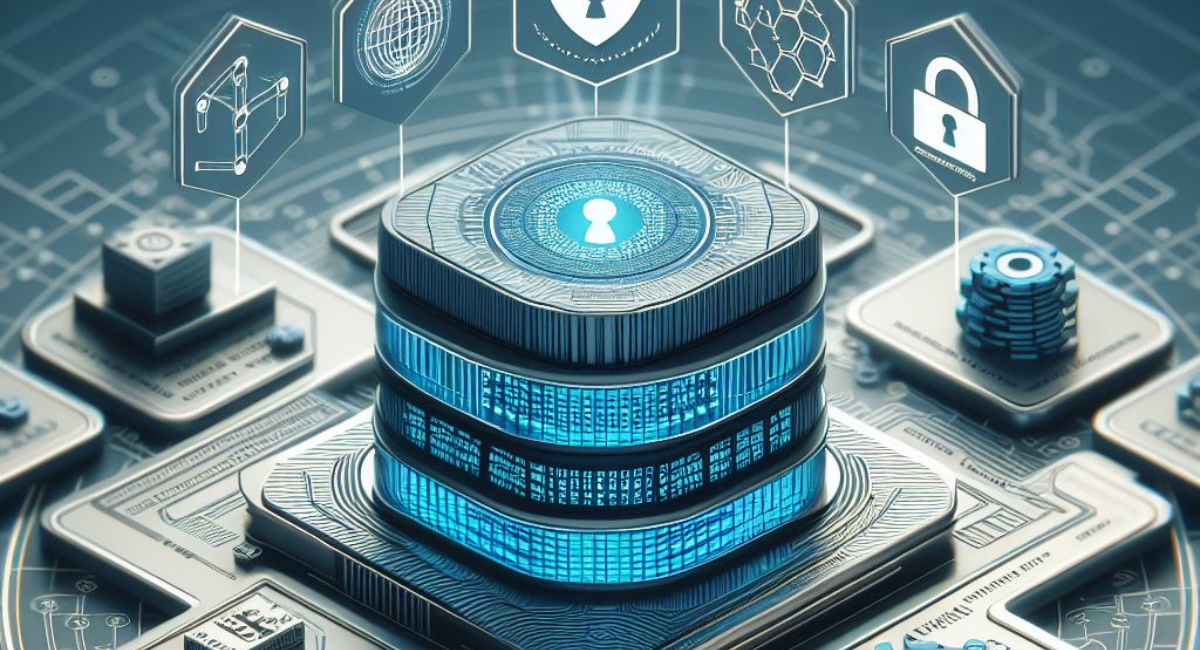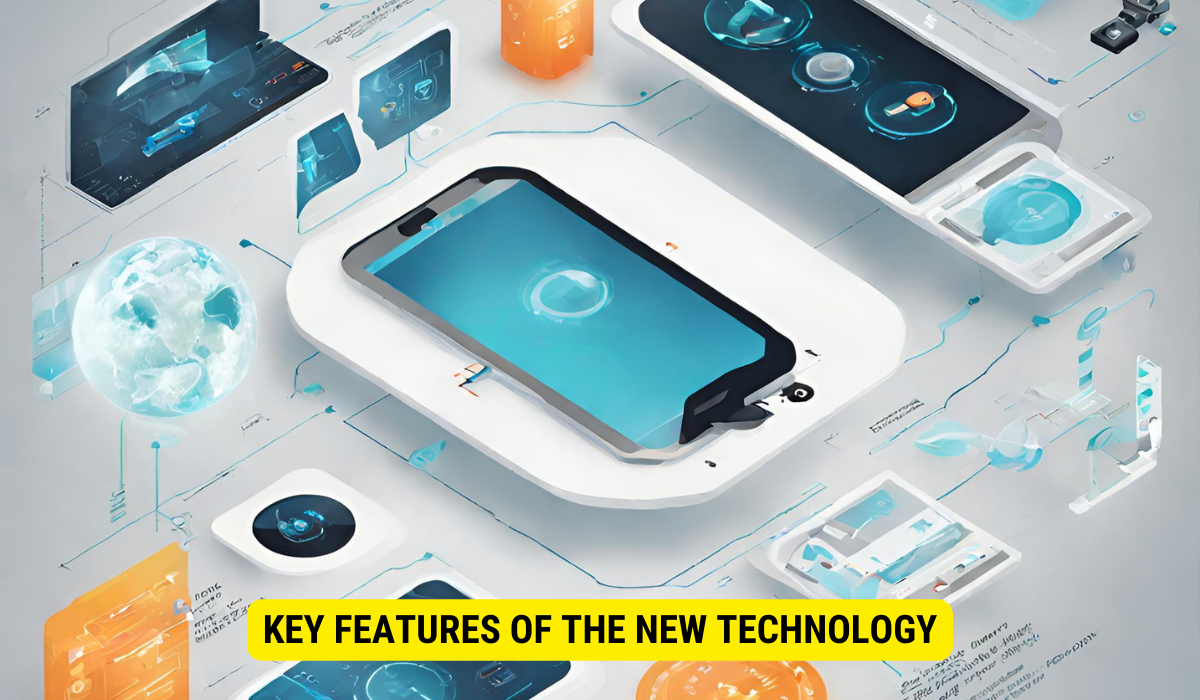This new technology, characterized by advanced encryption capabilities, machine learning integrations, and real-time data processing, might enhance security measures and efficiency but could also introduce vulnerabilities and concerns related to data privacy and management.
In recent years, technological advancements have revolutionized how we live and work. These developments have profoundly impacted society, from artificial intelligence to the Internet of Things. However, as we continue to embrace new technologies, it is crucial to consider how they might affect security, privacy, and data. Together, we will explore this new technology’s potential implications and discuss strategies to mitigate any risks or concerns.
Understanding the New Technology
To evaluate the impact of this emerging technology accurately, it is imperative to gain a thorough comprehension of its fundamental attributes. By scrutinizing its functionalities and capabilities, we can ascertain the potential advantages and disadvantages associated with its implementation.
In order to grasp the essence of this novel technology, it is imperative to conduct a comprehensive examination of its intricacies. This entails not only exploring its superficial characteristics but also delving into its underlying mechanisms and operational processes.
One of the pivotal aspects of this technology lies in its advanced encryption capabilities. In today’s ever-evolving landscape of data security, the capacity to safeguard sensitive information through encryption is of paramount importance. This technology employs cutting-edge encryption algorithms that guarantee the preservation of data integrity, even when confronted with highly sophisticated cyber threats.
Another notable feature is the integration of machine learning algorithms. These algorithms enable the technology to learn from data patterns and make intelligent decisions or predictions. By leveraging machine learning, this technology can provide valuable insights and automate complex tasks, increasing efficiency and productivity.
In addition to encryption and machine learning, real-time data processing is a significant aspect of this technology. With the ability to process vast amounts of data in real-time, organizations can make informed decisions quickly. This real-time processing capability opens up new possibilities for finance, healthcare, and logistics industries, where timely actions can have a significant impact.
Key Features of the New Technology
Before diving into the potential consequences, it is important to grasp the core features of this technology. Whether it involves advanced encryption, machine learning algorithms, or real-time data processing, understanding the fundamental aspects allows us to make well-informed decisions regarding security, privacy, and data management.
In terms of security, the advanced encryption features of this technology offer a strong safeguard against unauthorized access. Through the encryption of data both when it is stored and when it is being transferred, organizations can guarantee the security of sensitive information, thereby diminishing the potential for data breaches.
Furthermore, the integration of machine learning algorithms introduces a heightened degree of intelligence into the process of data analysis. This technology has the capacity to unveil valuable insights that might have otherwise remained hidden, achieved by scrutinizing extensive datasets and recognizing underlying patterns. Consequently, this has the potential to enhance decision-making and ultimately improve business results.
Furthermore, the real-time data processing feature enables organizations to act swiftly based on up-to-date information. In industries where time is of the essence, such as stock trading or emergency response, the ability to process data in real time can be a game-changer. It allows organizations to seize opportunities and respond to critical situations promptly.
How the Technology Works?

We must also delve into how this technology functions to assess its impact. By examining its underlying mechanisms and processes, we can identify potential vulnerabilities and evaluate security, privacy, and data management implications. Understanding the inner workings helps us anticipate potential risks and develop suitable countermeasures.
At its core, this technology relies on sophisticated algorithms and a powerful computing infrastructure. The algorithms, including machine learning models and encryption algorithms, are designed to handle complex tasks efficiently. These algorithms are executed on high-performance computing systems, ensuring speedy processing and data analysis.
When it comes to security, the technology employs a multi-layered approach. Data is encrypted using industry-standard encryption algorithms, making it virtually impossible for unauthorized individuals to decipher. Access controls and authentication mechanisms are also executed to ensure that only authorized users can interact with the system.
From a privacy perspective, this technology prioritizes data protection. It adheres to privacy regulations and best practices, ensuring that personal information is handled carefully. Organizations can strike a balance between data utility and privacy preservation by implementing privacy-enhancing technologies, such as data anonymization or differential privacy.
Regarding data management, this technology offers robust solutions for data storage, retrieval, and processing. It leverages distributed systems and cloud computing infrastructure to efficiently handle large volumes of data. This allows organizations to scale their operations seamlessly and leverage the benefits of cloud computing, such as cost savings and flexibility.
Impact on Security
One of the foremost concerns when adopting any new technology is its impact on security. While this technology may bring tremendous benefits and efficiency, it can also introduce vulnerabilities and risks that may compromise sensitive information.
Regarding the impact on security, it is essential to consider both the positive and negative features. On one hand, this technology can streamline processes, improve productivity, and enhance communication. However, on the other hand, it can also expose organizations to potential cybersecurity threats.
Potential Security Risks
With every technological advancement comes associated risks. This new technology is no exception, as it may expose organizations to cybersecurity threats such as data breaches, hacking attempts, and unauthorized access. It is crucial to identify these potential risks to implement appropriate security measures.
Data breaches pose a substantial concern in the contemporary digital environment. It is imperative for organizations to safeguard confidential data, encompassing customer information, intellectual assets, and financial documentation, against unauthorized access. Given the dynamic nature of hacker tactics, organizations must maintain a proactive approach to security.
Another pertinent risk organizations must confront is unauthorized access. The utilization of current technology introduces the risk of unapproved individuals gaining entry to sensitive information or systems, potentially resulting in substantial financial losses, harm to reputation, and legal ramifications.
Measures for Enhancing Security
Organizations should adopt proactive measures to mitigate the security risks posed by this technology. This can include implementing robust encryption protocols, investing in advanced threat detection systems, and conducting regular security audits.
Encryption is of paramount importance when it comes to protecting confidential data. When data is encrypted both when it’s stored and when it’s being transferred, it guarantees that the information remains unintelligible and unexploitable, even if it ends up in unauthorized possession. Moreover, the incorporation of multi-factor authentication can provide an additional level of protection, thereby increasing the difficulty for unauthorized parties to obtain access.
Investing in advanced threat detection systems is also essential. These systems use machine learning algorithms and artificial intelligence to identify and respond to potential security threats in real time. Organizations can detect and mitigate threats by continuously monitoring network traffic, user behavior, and system logs before they cause significant damage.
Regular security audits are crucial for maintaining a strong security posture. Organizations can identify vulnerabilities and weaknesses by conducting comprehensive assessments of systems, networks, and processes. This allows them to address these issues and strengthen their overall security proactively.
Furthermore, organizations should stay updated with the latest security trends and best practices. This includes regularly patching and updating software, training employees on cybersecurity awareness, and establishing incident response plans. Organizations can significantly improve their security posture and protect against potential threats by staying proactive and vigilant.
Implications for Privacy
While security focuses on protecting information from external threats, privacy is concerned with protecting personal data and ensuring individuals have control over their information. This new technology may have privacy implications, and it is imperative to examine these concerns.
Privacy Concerns with the New Technology
The adoption of new technology often raises privacy concerns. This includes issues such as collecting and using personal data, potential surveillance risks, and erosion of individual privacy rights. Addressing these concerns and establishing safeguards to preserve privacy in the digital age is vital.
Privacy Protection Strategies
Organizations should adopt privacy protection strategies to safeguard privacy in the face of this new technology. This can involve obtaining explicit consent for data collection, implementing privacy-by-design principles, and adopting strong data anonymization techniques. By proactively considering privacy during the development and deployment of this technology, organizations can strike a balance between innovation and preserving privacy rights.
Effect on Data Management
In addition to security and privacy, adopting this new technology can have far-reaching implications for data management. Data’s increased volume and complexity require robust strategies to ensure effective and secure data handling.
Data Vulnerabilities Introduced by the Technology
Every technology has the potential to introduce vulnerabilities into data management. This new technology may create new entry points for unauthorized access, data leaks, or data corruption. Organizations must identify these vulnerabilities to develop suitable data management strategies.
Data Management Solutions
Organizations should deploy comprehensive data management solutions to manage data in the context of this new technology effectively. This includes establishing data governance frameworks, implementing data classification systems, and employing secure data storage practices. By adopting a holistic approach to data management, organizations can ensure their data’s integrity, availability, and confidentiality.
Balancing Technology Advancements with Security, Privacy, and Data

As technology evolves rapidly, it becomes increasingly crucial to balance reaping the benefits of innovation and addressing security, privacy, and data concerns. This new technology presents a challenge that organizations must confront head-on.
The Challenge of Keeping Pace
Keeping pace with the evolving technological landscape is an ongoing challenge for organizations across various sectors. As this new technology advances, organizations must stay knowledgeable, adapt to emerging threats, and continually reassess their security, privacy, and data management practices to ensure alignment with the changing landscape.
Future Predictions and Preparations
Looking ahead, it is essential to anticipate future developments and prepare accordingly. By closely monitoring industry trends and engaging in ongoing research and development, organizations can mitigate risks and harness this new technology’s full potential while safeguarding security, privacy, and data.
Key Takeaways
- The new technology integrates advanced encryption, machine learning algorithms, and real-time data processing, promising efficiency and enhanced security.
- Despite its benefits, the technology might introduce vulnerabilities to data breaches, unauthorized access, and other cybersecurity threats.
- Privacy concerns emerge with the adoption of the technology, emphasizing the importance of consent, data anonymization, and privacy-by-design principles.
- Proper data management strategies, including data governance and secure storage practices, become crucial with the adoption of this technology.
- Continuous monitoring, staying updated with security trends, and proactively addressing vulnerabilities are vital to balancing the technology’s advantages with potential challenges.
FAQs
What are the main features of new technology?
The technology boasts advanced encryption capabilities, integrates machine learning algorithms, and offers real-time data processing.
How might technology impact data security?
While the technology can streamline processes and enhance encryption, it may also introduce vulnerabilities that expose organizations to cybersecurity threats like data breaches and unauthorized access.
Are there privacy concerns related to this new technology?
Yes, there are concerns about personal data collection, potential surveillance risks, and the erosion of individual privacy rights.
How does this technology affect data management?
The technology could introduce new vulnerabilities in data management, requiring organizations to develop robust data management strategies.
Can organizations balance the benefits of this technology with potential risks?
With proactive measures, monitoring, and continuous reassessment of security, privacy, and data management practices, organizations can harness the technology’s potential while mitigating risks.
Conclusion
In conclusion, adopting new technology undoubtedly brings numerous benefits and opportunities. However, it is crucial to consider the potential implications for security, privacy, and data management. By understanding the key features, risks, and protective measures associated with this technology, organizations can confidently navigate the digital landscape, ensuring the safety and privacy of their stakeholders’ sensitive information.

